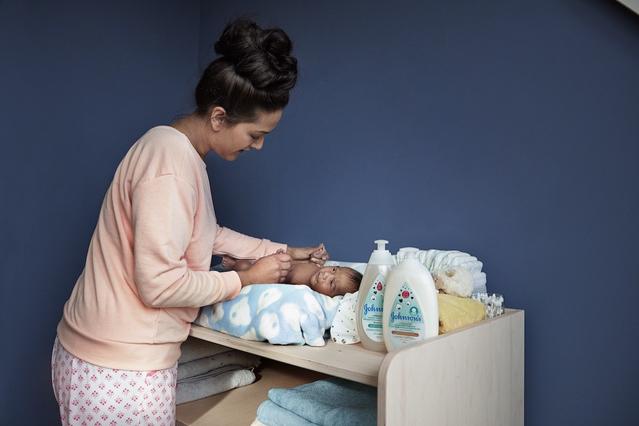About Your Newborn’s Skin
There’s nothing quite like caressing your baby’s soft, dreamy skin – it’s an incredible experience. Newborn skin is very sensitive, however, and functions as a shield by protecting baby from irritants, germs and bacteria, while also regulating their internal temperature and allow them to explore their world through touch. As you can tell, baby skin is extremely delicate and requires special care and attention, especially in baby’s first few years of life.
From bathing baby to applying a gentle moisturizer, it’s vital to nurture their skin, but also to nurture your special bond with them through touch.
Compared to adult’s skin, newborn skin:
Is about 30% thinner
Can lose moisture faster
Is more prone to irritation
Absorbs and loses water at a faster rate
More delicate and needs more protection

NEW COTTONTOUCH® Collection for Newborn Skin
Your newborn needs a gentle touch. Our COTTONTOUCH® baby products are blended with real cotton and specifically formulated to provide gentle care on sensitive baby skin.
Identifying & Caring for Common Newborn Skin Conditions
Just like your newborn beginning to see the world with fresh eyes, their skin is also developing and requires extra care. Newborns are often susceptible to skin conditions and must adapt from their water-like origins in the womb to dry environments after birth. While baby’s skin can absorb moisture much faster than an adult’s skin, baby can lose their moisture much quicker – leaving their skin prone to dryness. As a result, baby’s delicate skin needs to be handled with extreme care.
Newborn Acne
In nearly 20% of babies, newborn acne often manifests itself in the appearance of pimples, whiteheads or minor rashes – thankfully – it often resolves itself in the first few months. They’re the result of immature sweat glands and possible hormones from your pregnancy. If your newborn acne’s seems severe, or you have concerns, speak to your baby’s healthcare provider about newborn acne treatment options.
Newborn Skin Peeling
Don’t fret! It’s perfectly normal for baby’s skin to peel in their first few days after birth, especially on the palms, soles and ankles. The skin peeling will typically go away on its own. Go ahead and ask your baby’s healthcare provider if you’d like to use a baby ointment or moisturizer to help.
Newborn Cradle Cap
If you see a skin condition on baby that looks like crusty or scaly patches on the scalp or eyebrows – it could be a very common newborn skin rash called cradle cap or seborrheic dermatitis. The rash may appear in the first few weeks and can last several weeks. You can moisturize the skin by gently massaging our COTTONTOUCH® Newborn Face & Body Lotion or baby oil onto the patches to soften the crust. Wait a few minutes, then comb gently to remove the flakes. Then you can wash with a gentle shampoo like our COTTONTOUCH® Wash & Shampoo.
